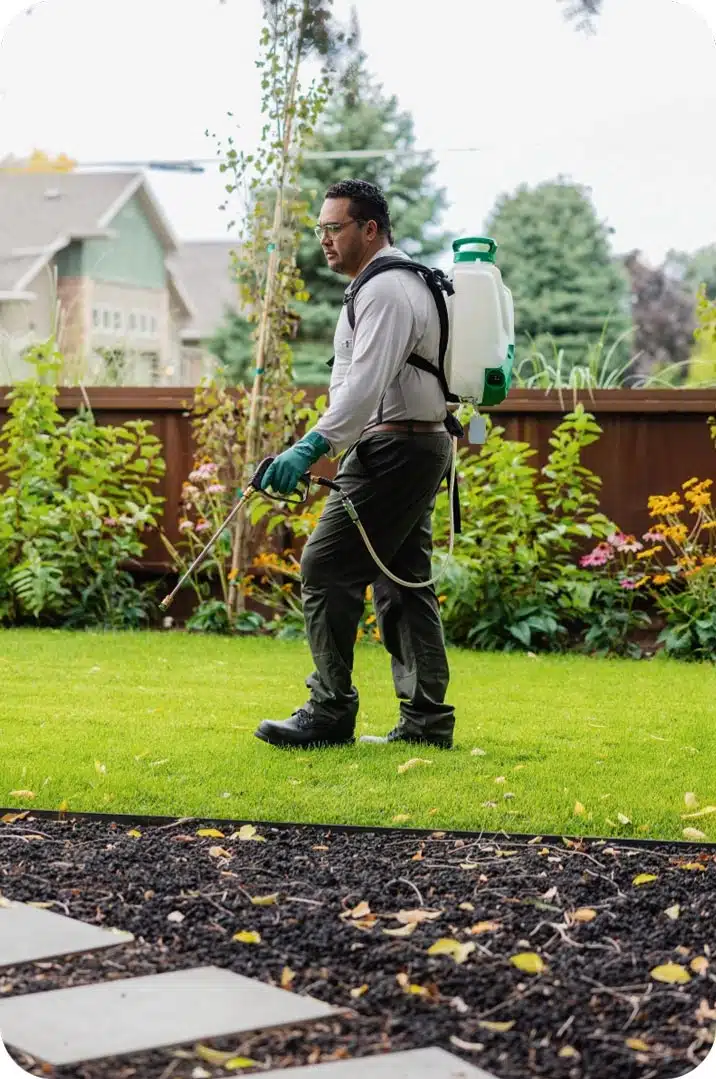A1 Bed Bug Exterminator Charlotte - Effective and Budget Friendly Services
A1 Bed Bug Exterminator Charlotte - Effective and Budget Friendly Services
Blog Article
Bed Pest Treatment Break Down: Contrasting Chemical Vs. Non-Chemical Solutions
In the realm of bug control, particularly when taking care of the relentless concern of bed insects, the selection in between chemical and non-chemical therapy options can be a critical one. Both strategies supply distinct advantages and disadvantages, affecting variables such as effectiveness, safety considerations, and general expense. By checking out the nuanced information of each approach, a clearer understanding of which path to pursue in dealing with a bed pest problem can be achieved.
Efficiency of Chemical Treatments
Chemical therapies for bed insect infestations have been extensively acknowledged for their potent and rapid efficiency in removing these insects. When taking into consideration the performance of chemical treatments, it is crucial to recognize that they can offer a complete and quick option to a bed bug problem.
Moreover, chemical treatments have the benefit of providing recurring effects, suggesting that they can continue to get rid of bed pests even after the preliminary application. This recurring action is specifically valuable in combating any type of potential re-infestations. Additionally, the quick activity of chemical treatments can bring relief to people facing serious bed insect infestations, enabling them to gain back control of their space quickly.
Safety Worries With Chemical Solutions
When making use of chemical remedies for bed pest treatment is guaranteeing the security of residents and the environment,One vital aspect that needs careful consideration. While chemical treatments can be efficient in eradicating bed bugs, they may position risks otherwise dealt with correctly. One of the primary safety and security worry about chemical remedies is the potential damage they can cause to human health and wellness. Exposure to certain chemicals made use of in bed insect treatments can lead to respiratory system problems, skin inflammation, or various other damaging responses, especially in individuals with pre-existing conditions or level of sensitivities. In addition, inappropriate application or dosage of chemical pesticides can cause hazardous deposits remaining in the treated location, positioning long-lasting health threats to residents.
Additionally, the environmental impact of chemical services is another considerable factor to consider. Some chemicals used in bed insect treatments might be dangerous to beneficial pests, wild animals, and ecological communities if they seep right into the dirt or water systems. It is important to utilize chemical treatments deliberately, complying with safety and security guidelines, and considering less toxic alternatives to minimize these risks and ensure the risk-free and efficient management of bed pest problems.
Benefits of Non-Chemical Methods
Taking into consideration the potential security issues and environmental effect connected with chemical remedies for bed bug treatment, exploring non-chemical methods provides an appealing alternative with several distinct advantages. Non-chemical therapies are environmentally pleasant, as they do not add to air or water pollution, making them a lasting option for insect control.
Furthermore, non-chemical options can be reliable in targeting bed pests, including official site hard-to-reach locations where chemical therapies might not penetrate - A1 charlotte bed bug exterminator. Techniques such as heat treatment, vacuuming, vapor cleansing, and cushion coverings supply thorough eradication without the use of hazardous chemicals.
Limitations of Non-Chemical Treatments

In addition, non-chemical treatments frequently need numerous applications to attain successful elimination. This can be taxing and might not constantly guarantee complete elimination of all bed insects and their eggs, specifically in hard-to-reach or surprise areas.
In addition, the success of non-chemical treatments heavily relies upon appropriate execution and thoroughness, which can be testing for people without professional expertise. Inadequate application of non-chemical techniques may lead to incomplete elimination, leading to persistent infestations and the demand for extra therapies.
For that reason, while non-chemical therapies have their benefits, it is important to acknowledge these rat pest control constraints and consider them when identifying the most efficient method for handling bed bug infestations.
Cost Comparison: Chemical Vs. Non-Chemical Options
Given the limitations linked with non-chemical therapies, a vital element to examine in the context of bed pest administration is the expense comparison in between chemical and non-chemical options. In contrast, non-chemical therapies like heat treatment or vapor can be much more expensive, with costs varying from $1,000 to $6,000 for an entire home. While the preliminary price of chemical treatments might seem lower, several treatments might be required to completely get rid of the infestation, potentially increasing the total expense.
Verdict

Considering the prospective safety issues and ecological influence linked with chemical options for bed pest treatment, exploring i was reading this non-chemical techniques offers a promising choice with several unique benefits.Provided the constraints connected with non-chemical therapies, a vital element to examine in the context of bed pest monitoring is the expense comparison in between chemical and non-chemical options. In contrast, non-chemical therapies like heat therapy or heavy steam can be more pricey, with prices varying from $1,000 to $6,000 for a whole home. While the first price of chemical therapies may appear reduced, numerous therapies might be needed to completely remove the problem, potentially raising the total price.In verdict, when contrasting chemical and non-chemical bed insect therapy choices, it is crucial to take into consideration effectiveness, safety and security, advantages, restrictions, and price.
Report this page